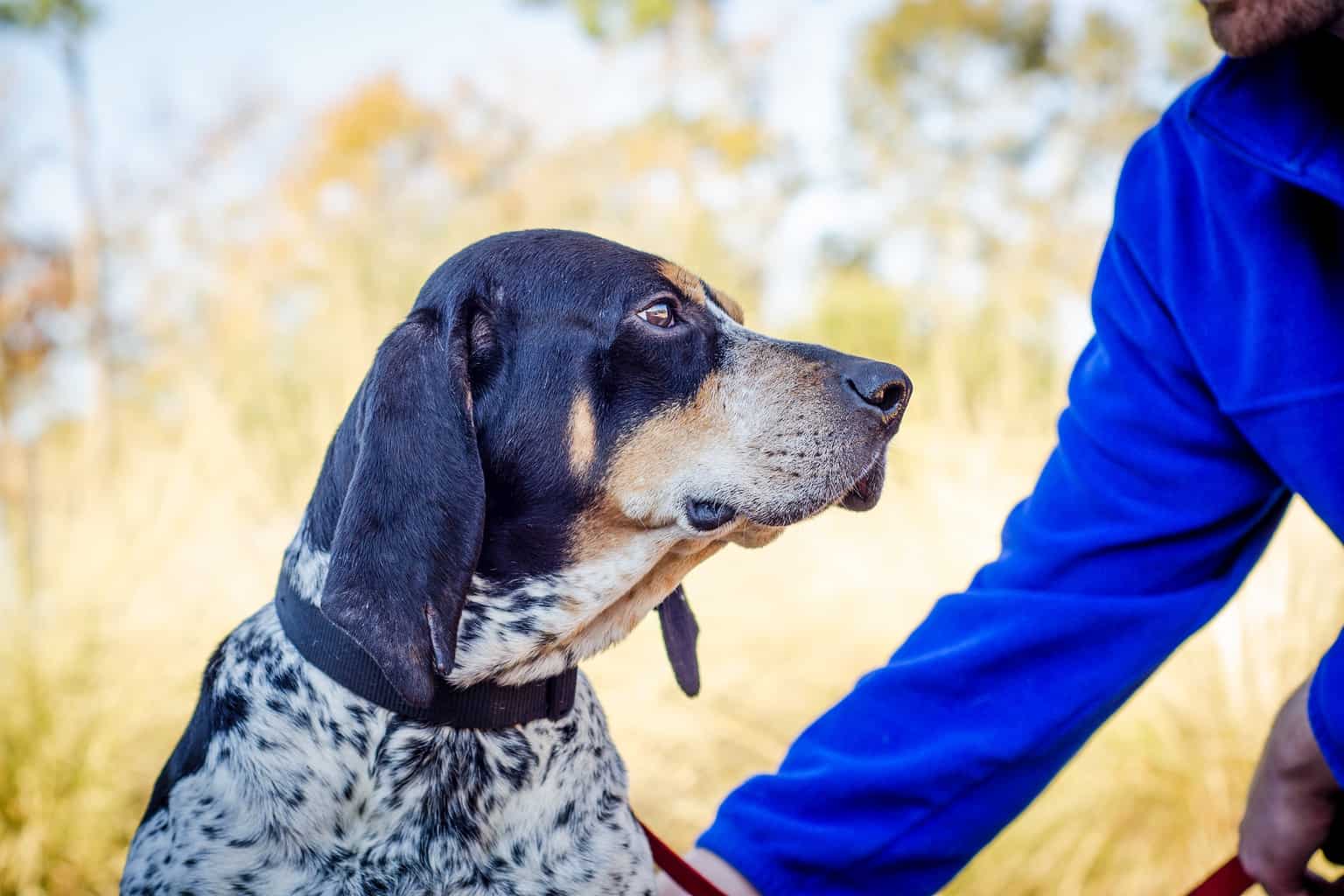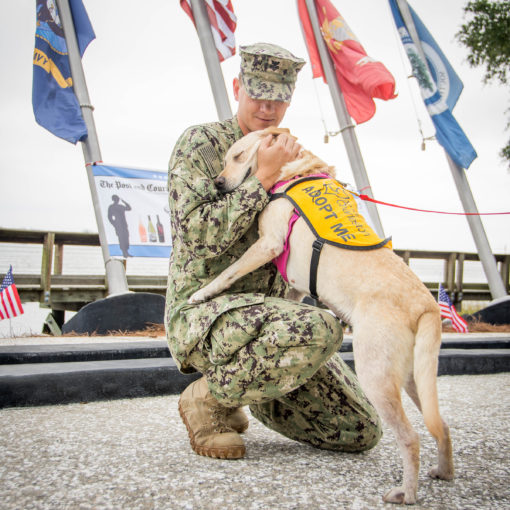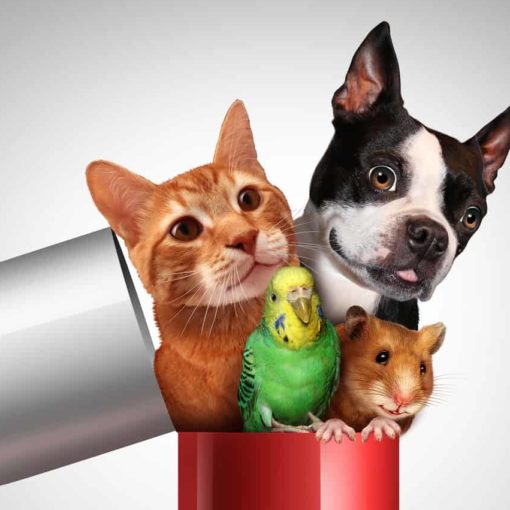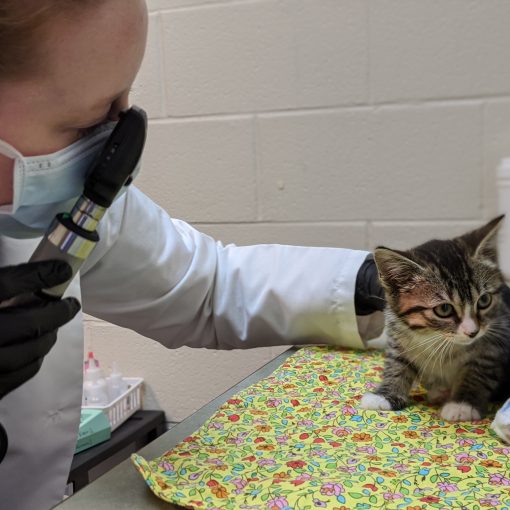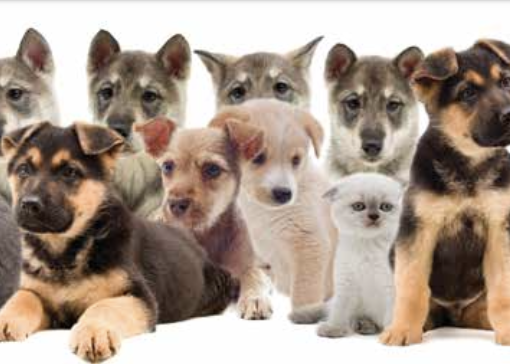By Ellie Whitcomb Payne
Charleston Animal Society and other Lowcountry shelters see a surge in hound dogs brought in as strays each winter and spring. Picked up in rural areas, some with hunting-style dog collars, many others without, these animals fit the profile of “deer dogs” and the shelter is overrun.
Ribs show through the skin of a Walker hound with splayed feet and scarred ears. A skittish Beagle, positive for heartworms, cowers in the back of her cage. Another skinny hound, with pressure sores, scarred ears and heartworms, shows quiet excitement at the front of her kennel. And these were just the first three of 10 seen over a 30-minute period on a walkthrough at Charleston Animal Society. These animals were found running loose in rural areas like Wadmalaw Island, Ravenel, Awendaw, Lincolnville, and Adams Run.
It’s just another day at Charleston Animal Society, where abandoned dogs flood the shelter every winter and spring.
THE CLUES ARE CLEAR
Shelters annually see a sharp spike in hounds that coincides with deer hunting season. From January 2017 through February of this year, Charleston Animal Society took in 290 hounds. Only 47 of them were returned to their owners. The remaining 84% of these hounds were left behind.
Other area shelters see similar trends. Jami Bunton of Dorchester Paws said 258 hounds were brought in as strays last year. For those without identification, shelter personnel can’t know for sure their backgrounds, but several indicators suggest they are lost or abandoned hunting dogs:
- Splayed feet show the dog was likely kept in a kennel with unstable flooring, like chicken wire used in hunting kennels
- Scarred and ripped ears indicate a life running through brush
- Untreated neck and ear wounds
- Brightly colored collars with name plates torn off
Brittany Wiley, a technician of Animal Health and Welfare with Charleston Animal Society, has a soft spot for hounds, a breed she calls one of the goofiest and friendliest around. Her heart sinks each time another case comes in. “There is a standard of care that should apply to all animals,” she says. “It is sad when they treat these dogs as ‘tools’ they can throw away, instead of treating them like family members.”
Wiley says hunting is not the problem, it’s a group of the hunters that don’t treat their dogs well. “There are many good [dog] hunters out there, we just don’t see their dogs because those animals are taken care of.”
HUNTERS ARE CONCERNED TOO
Chad Fuller, from Lexington, has hunted the Lowcountry for the past 10 years. In February, on one of his daily trap checks, Chad found a captured hound. It appeared domesticated, because as he extended his hands towards the animal’s nose, it promptly went into a submissive position. “The dog was clearly dealing with starvation and going for whatever food it could find. But at the same time, and even though it was trapped and scared, it did not try to attack me.” Chad freed the dog unharmed but was unable to coax it into his truck. It had no identifying information.
Fuller can attest to an annual increase in “strays” seen rummaging for food at local convenience stores at the end of deer hunting season. “We are not dealing with Chihuahuas running around in trash cans,” Chad observes. “We’re dealing with dogs that, though not necessarily pure bred, do seem to be of the type used for hunting deer.”
Because of controversy surrounding deer dog hunting (see sidebar), many hunters shied away from discussing hunting dog neglect. One local hunter, Jon Hill, admitted to finding lost dogs on his hunting lease. These dogs did have identification and Jon called the owner. Jon has great admiration for the sport and believes a few bad actors are giving dog hunters a bad name. “The vast majority are ethical people,” says Jon, “and they try to collect their dogs. The ones that do not, leave the evidence in the form of a malnourished animal wandering on the side of a state highway. These dogs are almost always deer dogs.”
The South Carolina Department of Natural Resources (SCDNR) does not keep data on stray dogs. SCDNR Director of the Office of Media and Outreach Captain Robert McCullough says he doesn’t believe most hunters would intentionally abandon their animals. He does say there’s little doubt there are unscrupulous hunters who might use any dog “with a little pep” to run deer, “but I can’t say for sure that it (dog dumping) is a major recurring problem.”
Fuller adamantly believes most dog hunters in the area take care of their animals, the more prudent using expensive tools like radio and GPS collars. “But,” he continues, “there is also this contingent, the same as any profession… there are bad doctors… there are bad lawyers, there is a contingent of dog drivers that do turn their dogs loose at the end of the season.”
He adds, “I grew up in a hunting family that understood the value of dogs. That is what I don’t understand about this particular problem. They’re doing their job for you. Why not do your job as a human for them?”
WHAT CAN BE DONE?
Whether dumped or lost, these hunting dogs end up in local shelters, if they’re lucky. Many times they end up shot, hit by cars, or die of starvation or disease. For lost dogs, steps can be taken to help owners retrieve their hounds. GPS and radio collars can help tremendously by keeping track of hunting dogs, but they can cost several hundred dollars. By law, all hunting dogs must be collared with owner contact information. If a lost dog ditches his collar, microchipping can help identify owner information.
But complicating the problem is South Carolina state statute (Section 47-1-70) that exempts “identifiable” hunting dogs from the state’s abandonment cruelty law. So the challenge remains — getting the dogs’ previous owners to come check for their dogs at shelters. “We do call, but many times, the owners don’t want to come pick these dogs up,” Wiley says.
“Hunting is a job for these dogs, but even as they get older and slower, owners should help them move in to the second phase of their lives, to being a day-to-day companion,” says Bunton of Dorchester Paws.
Charleston Animal Society Board President Hank Greer has a message for hunters who are considering dumping their animals, “Please give us a chance to find these beautiful animals good homes. We want to help them live fulfilled lives.” When an animal is brought in, receiving key information about health and temperament can make finding a new home much easier. To bring your dog to the shelter, call ahead and make an appointment. It is a judgement-free process with one goal in mind: the safety and health of your animal.
Deer Dog Hunting
Hunting deer with dogs is a centuries-old tradition with deep Lowcountry roots. “Deer doggers,” as the hunters are sometimes called, revere the sport for its camaraderie and excitement. But much tension and controversy surrounds deer dog hunting.
As hunting lands become smaller and the Lowcountry sees more development, this way of life is threatened. Landowners, other hunters, and lawmakers put pressure on deer doggers for different reasons. The Property Watch Program of SCDNR reports an increasing amount of “landowner complaints due to deer dogs interfering with still hunting or other activities.” (2017-2018 SCDNR Hunting Guide). A bill in the South Carolina Senate, S.936, seeks to restrict dog hunting to land with 1000 acres or more, a law opponents say will cause an already diminishing pastime to disappear.
Different than other hunting styles, deer dog hunting is more social. Done in large groups of people with a pack of dogs, the hunters surround a property while the hounds chase deer out of the woods towards the hunters. Lawmakers have made hunting deer with dogs illegal in most of the country. Southeastern states hang on to the tradition, but even in South Carolina the sport is only allowed in the eastern half of the state.

